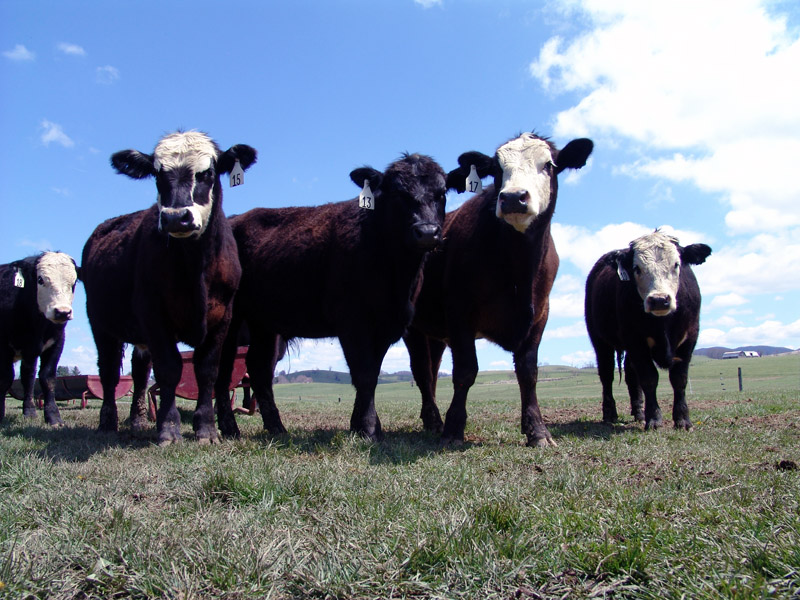
Agricultural News
Early Management Promotes Healthy Pasture- and Profitability
Tue, 07 Apr 2015 15:59:23 CDT
 The spring growing season is at hand. Therefore, it is time to develop management plans for our warm season pastures. Developing a pasture management plan now ensures the most optimal outcome for this growing season. The following is a list of considerations pertaining to pasture management to assist in developing a management plan.
The spring growing season is at hand. Therefore, it is time to develop management plans for our warm season pastures. Developing a pasture management plan now ensures the most optimal outcome for this growing season. The following is a list of considerations pertaining to pasture management to assist in developing a management plan.
Establish introduced pastures such as bermudagrass and old world (introduced) bluestem varieties during the early growing season. For hybrid bermudagrass varieties, the best time to plant is late winter or early spring, prior to spring flush (certainly by mid-April if possible). Tifton 85 bermudagrass is the exception; it needs to be planted after it breaks dormancy in the spring. Plant seeded bermudagrass varieties and old world bluestems according to species recommendations in the spring after the last frost of the year. Apply needed amendments such as lime, phosphorus and potassium at planting, and be prepared to control weeds in new stands. Apply nitrogen after seedling emergence. For specific products, rates and timing of herbicides in newly established stands, visit with your weed management specialist prior to establishment.
Fertilize introduced perennial pastures to meet production goals. Use current soil tests or take soil samples immediately to determine nutrient requirements for introduced pastures. Introduced pastures are most productive when managed according to nutrient analyses, although cost-benefit analyses need to be performed simultaneously. Apply recommended nutrients at green-up based on desired production. Target the most productive pastures (soils and forages) first and cover the acres you can afford to do well.
Be prepared to apply appropriate pesticides to introduced perennial pastures, especially if fertilized. Pests, such as weeds or insects, rob production from introduced pastures. Appropriately applied pesticides can protect the fertilizer investment. If six or more weed plants per square foot emerge early in the season, herbicide treatment is usually recommended. Grasshoppers or armyworms can be effectively treated with appropriate pesticides if treated early. For specific products, rates and timing, visit with your pest management specialist.
Spray unwanted weeds in native range pastures if weed pressure is expected to inhibit forage production. In native range, a forage composition of 15 to 25 percent forbs is normal and not usually at an economic threshold to warrant treatment. If wildlife is an important component of the operation, a healthy population of desirable forbs is needed. However, if weeds such as ragweed, broomweed and sericia lespedeza were an issue last year, a timely application of an appropriate weed spray could be beneficial. If an herbicide application is deemed necessary, target the most productive range sites. Planning now can ensure a more timely application and improve the efficacy of the treatment. For specific products, rates and timing, visit with your weed management specialist.
Provide rest and recovery to overgrazed or overused native range pastures. The recovery process for native range pastures begins with rest during the growing season. When possible, rest (do not graze) a targeted pasture for the entire grazing season. Graze the pasture lightly during winter, leaving adequate residual and ground cover. Another scenario would be to graze native pastures through early summer then defer grazing from July until after frost.
Maintain adequate residuals in all grazed pastures throughout the year. A residual height of at least 6 inches in native range pastures and 3 inches in introduced pastures should always be maintained. Managing residuals enhances pasture productivity by insulating the ground from high temperatures, maintaining plant vigor and resiliency, and allowing more water infiltration during rainfall events.
These are a few considerations to assist in preparing a pasture management plan for the growing season. Plans made now will impact production throughout the growing season.
Article written by Hugh Aljoe of the Noble Foundation, Ardmore, Oklahoma
WebReadyTM Powered by WireReady® NSI
Top Agricultural News
More Headlines...




















